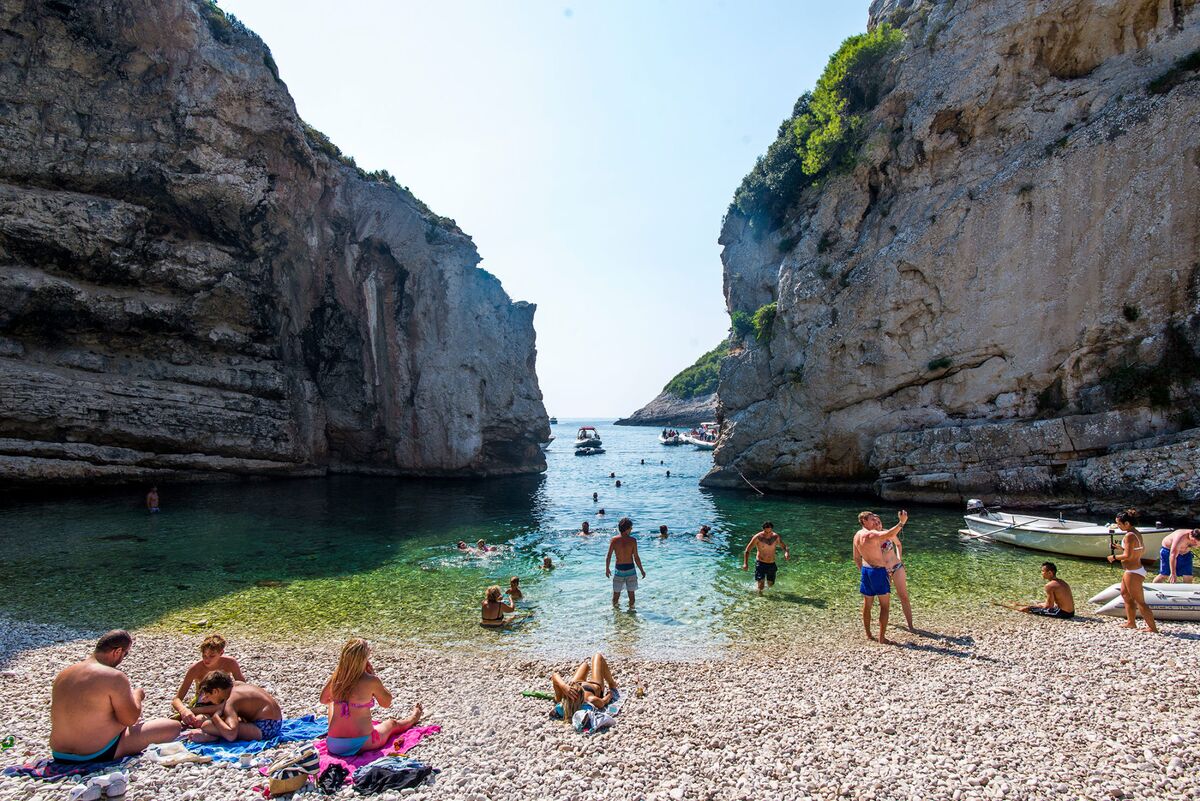
Croatia is seeking to shift away from its tried-and-true model of packing in tourists in favor of increasing visitors’ overall spending, officials said, dealing a potential blow to cruise and budget holiday operators in one of central Europe’s top vacation destinations.
The former Yugoslav republic has long catered to ship operators and the car-bound families gridlocked along Europe’s highways during the summer exodus to the sea, a strategy that has boosted new arrivals to the 5,800-kilometer (3,600-mile) island-dotted coast for years. Now it’s also witnessing a surge fueled by fans flocking to the historical port city of Dubrovnik, which featured in the last Star Wars film and serves as King’s Landing in the HBO television series Game of Thrones.
This year, Croatia’s leisure industry is on track to increase revenue by 10 percent, from 10 billion euros ($11.8 billion) in 2016, making up more than a fifth of the economy. But while the European Union member is a top-five destination in southern Europe, it lags many of its peers in spending per visitor. And as a backlash develops across the region against an oversaturation of tourism, Croatian officials are rethinking their approach, according to Tourism Minister Gari Cappelli.
“Our expectations related to tourist arrivals in the summer season have already been fulfilled,” Cappelli said by email this week. “In the next period we will focus on increasing average tourist spending as well as boosting visits outside the summer months.”
While ranking high on arrival numbers, Croatia was 10th in spending per tourist in 2015, behind Cyprus, Slovenia, Serbia and Bosnia-Herzegovina, according to the United Nations World Tourism Organization. Spending per international arrival in Portugal was almost twice as high.
Protests against visitors flocking to Europe’s southern shores have broken out this year in cities including Venice and Barcelona, where locals complain that throngs of foreigners are ruining cities for people who live there year round.
In Dubrovnik, Croatia’s most visited destination, officials announced plans this month to cut the number of cruise-ship arrivals by as much as two-thirds to protect the historic Old Town. On a recent day in August, more than 9,000 people jostled for space inside the ancient stone walls of city, a Unesco World Heritage site of marble and white-stone buildings clustered on cliffs overlooking the sea. The crowd exceeded the UN body’s recommendations.
“This was unacceptable,” Dubrovnik Mayor Mato Frankovic said by phone. “We cannot have 9,000 people in the historic center, because these people won’t be leaving Dubrovnik with nice memories.”
Arrivals rose 24 percent this year compared with the same period a year ago, he said. That has been a boon for hotel operators in the area including Blackstone Group LP’s Hilton Worldwide Inc., Rezidor Hotel Group AB’s Radisson Blu Hotels and Chile’s Grupo Luksic, which owns the Adriatic Luxury Hotels chain.
Cruises Disappointed
Frankovic said Vis, the most remote of Croatia’s major islands, may become the next “extremely popular” destination after the filming of a sequel to the film Mamma Mia, scheduled later this year. “They must prepare for it, and I hope they won’t be taken aback like we were by the increase in popularity.”
Now Dubrovnik is looking to pivot to “another tourist model, and concentrate on quality, not on numbers,” he said. “Counting arrivals and numbers of nights spent is out.”
Frankovic’s plan is to limit the number of cruise ships to two per day and about 4,000 passengers, from the current situation where up to six dock. That should ensure more space for visitors staying overnight. Not everyone sees that as a good idea. Cruise Lines International Association Europe said such a policy would be “disappointing.”
“The presence of cruise ships in Dubrovnik substantially benefits the economy not only of the city, but of communities all around the Adriatic,” Catherine Couplan, the organization’s vice president in charge of public relations, said by email. “We hope that the comments made by the Mayor of Dubrovnik will not be put into action without discussing their impact with the cruise lines and the tourism sector.”
(This story was previously corrected to reflect the size of Croatia’s economy.


0 comments:
Post a Comment